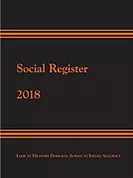
A social class or social stratum is a grouping of people into a set of hierarchical social categories, the most common being the working class, middle class, and upper class. Membership of a social class can for example be dependent on education, wealth, occupation, income, and belonging to a particular subculture or social network.

In the United States, White Anglo-Saxon Protestants (WASP) is a sociological term which is often used to describe white Protestant Americans of Northwestern European descent, who are generally part of the white dominant culture or upper-class and historically often the Mainline Protestant elite. Historically or most consistently, WASPs are of British descent, though the definition of WASP varies in this respect. WASPs have dominated American society, culture, and politics for most of the history of the United States. Critics have disparaged them as "The Establishment". Although the social influence of wealthy WASPs has declined since the 1960s, the group continues to play a central role in American finance, politics, and philanthropy.
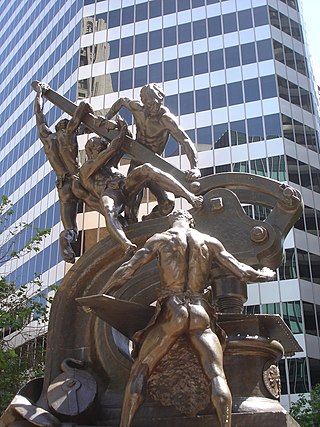
Social class in the United States refers to the idea of grouping Americans by some measure of social status, typically by economic status. However, it could also refer to social status and/or location. The idea that American society can be divided into social classes is disputed, and there are many competing class systems.
Old money is "the inherited wealth of established upper-class families " or "a person, family, or lineage possessing inherited wealth". It is a social class of the rich who have been able to maintain their wealth over multiple generations, often referring to perceived members of the de facto aristocracy in societies that historically lack an officially established aristocratic class, in contrast with new money whose wealth has been acquired within its own generation.
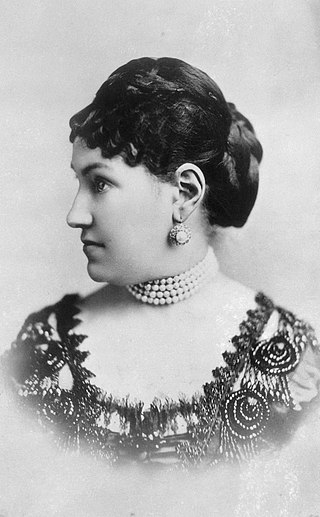
Caroline Webster "Lina" SchermerhornAstor was a prominent American socialite of the second half of the 19th century who led the Four Hundred. Famous for being referred to later in life as "the Mrs. Astor" or simply "Mrs. Astor", she was the wife of yachtsman William Backhouse Astor Jr. They had five children, including Colonel John Jacob Astor IV, who perished on the RMS Titanic. Through her marriage, she was a prominent member of the Astor family and matriarch of the male line of American Astors.
Upper class in modern societies is the social class composed of people who hold the highest social status, usually are the wealthiest members of class society, and wield the greatest political power. According to this view, the upper class is generally distinguished by immense wealth which is passed on from generation to generation. Prior to the 20th century, the emphasis was on aristocracy, which emphasized generations of inherited noble status, not just recent wealth.
Nouveau riche, new rich or new money is a social class of the rich whose wealth has been acquired within their own generation, rather than by familial inheritance. These people previously had belonged to a lower social class and economic stratum (rank) within that class and the term implies that the new money, which constitutes their wealth, allowed upward social mobility and provided the means for conspicuous consumption, the buying of goods and services that signal membership in an upper class. As a pejorative term, nouveau riche affects distinctions of type, the given stratum within a social class; hence, among the rich people of a social class, nouveau riche describes the vulgarity and ostentation of the newly rich person who lacks the worldly experience and the system of values of old money, of inherited wealth, such as the patriciate, the nobility, and the gentry.
Louis Keller was an American publisher, social arbiter of high society, and golf club owner. He was the founder of Baltusrol Golf Club in New Jersey and the first publisher of the Social Register.

A socialite is a person usually from a wealthy or aristocratic background who is prominent in high society. A socialite generally spends a significant amount of time attending various fashionable social gatherings, instead of having traditional employment.

A gentlemen's club is a private social club of a type originally set up by men from Britain's upper classes in the 18th and succeeding centuries.

Social stratification refers to a society's categorization of its people into groups based on socioeconomic factors like wealth, income, race, education, ethnicity, gender, occupation, social status, or derived power. It is a hierarchy within groups that ascribe them to different levels of privileges. As such, stratification is the relative social position of persons within a social group, category, geographic region, or social unit.

In political and sociological theory, the elite are a small group of powerful people who hold a disproportionate amount of wealth, privilege, political power, or skill in a group. Defined by the Cambridge Dictionary, the "elite" are "the richest, most powerful, best-educated, or best-trained group in a society."
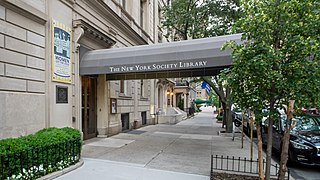
The New York Society Library (NYSL) is the oldest cultural institution in New York City. It was founded in 1754 by the New York Society as a subscription library. During the time when New York was the capital of the United States, it was the de facto Library of Congress. Until the establishment of the New York Public Library in 1895, it functioned as the city's library as well. It has been patronized by a wide variety of literary and political figures, from George Washington to Wendy Wasserstein. Its special collections include books from the libraries of John Winthrop and Lorenzo Da Ponte.

The Pierre is a luxury hotel located at 2 East 61st Street, at the intersection of that street with Fifth Avenue, in Manhattan, New York City, facing Central Park. Designed by Schultze & Weaver, the hotel opened in 1930 with 100+ employees, now with over a thousand. In 2005, the hotel was acquired by Taj Hotels Resorts and Palaces of India. Standing 525 feet (160 m) tall, it is located within the Upper East Side Historic District as designated in 1981 by the New York City Landmarks Preservation Commission.
The American upper class is a social group within the United States consisting of people who have the highest social rank, due to a lineage associated with wealth, pedigree, and typically economic wealth however it is not necessarily required. The American upper class is distinguished from the rest of the population due to the fact that its primary source of income consists of assets, investments, and capital gains rather than wages and salaries. The American upper class is estimated to include 1% of the population.
The social structure of the United Kingdom has historically been highly influenced by the concept of social class, which continues to affect British society today. British society, like its European neighbours and most societies in world history, was traditionally divided hierarchically within a system that involved the hereditary transmission of occupation, social status and political influence. Since the advent of industrialisation, this system has been in a constant state of revision, and new factors other than birth are now a greater part of creating identity in Britain.
The Black elite is any elite, either political or economic in nature, that is made up of people who are of Black African descent. In the Western World, it is typically distinct from other national elites, such as the United Kingdom's aristocracy and the United States' upper class.
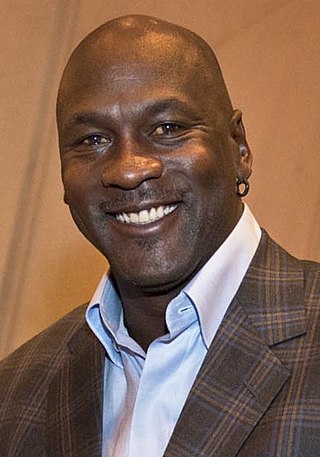
The African-American upper class, sometimes referred to as the black upper class, the black upper middle class or black elite, is a social class that consists of African-American individuals who have high disposable incomes and high net worth. The group includes highly paid white-collar professionals such as academics, engineers, lawyers, accountants, doctors, politicians, business executives, venture capitalists, CEOs, celebrities, entertainers, entrepreneurs and heirs.
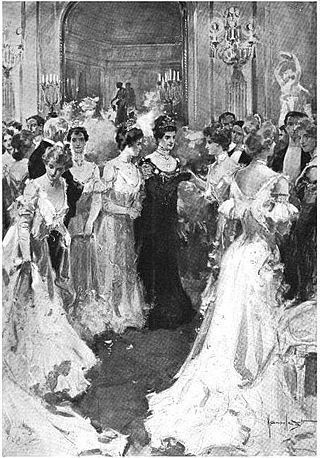
High society, sometimes simply society, is the behavior and lifestyle of people with the highest levels of wealth and social status. It includes their related affiliations, social events and practices. Upscale social clubs were open to men based on assessments of their ranking and role within high society. In American high society, the Social Register was traditionally a key resource for identifying qualified members. For a global perspective, see upper class. The quality of housing, clothing, servants and dining were visible marks of membership.

The Four Hundred was a list of New York society during the Gilded Age, a group that was led by Caroline Schermerhorn Astor, the "Mrs. Astor", for many years. After her death, her role in society was filled by three women: Mamie Fish, Theresa Fair Oelrichs, and Alva Belmont, known as the "triumvirate" of American society.
